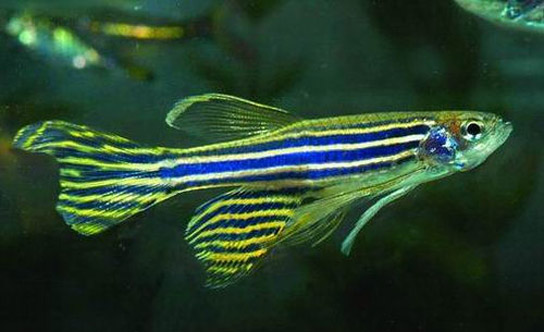
Zebrafish provide a valuable model for studying gene behavior and function.
Zebrafish (Danio rerio) are a useful model for studying gene behavior and function. Researchers have been able to make custom changes in the zebrafish’s genome, using artificial enzymes to cut portions of DNA out of targeted positions in a gene sequence, which were replaced by synthetic DNA.
The scientists published their findings in the journal Nature. Stephen Ekker, molecular biologist at the Mayo Clinic in Rochester, Minnesota, led the team that was able to do this for the first time. Previously, researchers had been able to edit targeted portions of the genomes of living animals using enzymes known as zinc finger nucleases (ZFNs) or gene-regulation molecules called morpholinos.

Zebrafish DNA has been adapted by a deliberate mutation at targeted locations using ZFNs or enzymes called transcription activator-like effector nucleases (TALENs), and by the manipulation of gene behavior using morpholinos. TALENs can also be used for targeted genome editing in cell cultures, but this is the first time that artificial TALENs were used for genome editing in live zebrafish larvae.
TALENs are cheaper than ZFNs and morpholinos, more efficient, and have the potential to work on any DNA sequence, whereas ZFNs can target only specific sequences. The effects of morpholinos are temporary, but TALENs cause permanent modifications, and a faster analysis of induced mutations.
One of the sequences used allows genes to be switched on and off. This could allow researchers to examine the effects of a gene in early development, by turning it on immediately, or later in life when the fish reaches maturity, which isn’t usually possible because fish with deliberately mutated genes that affect development don’t always survive into adulthood.
Zebrafish could be used to model the gene behavior of complex diseases, behavioral functions of specific brain neurons, or tease apart the network of signals that orchestrate vertebrate development.
Ekker and his team will try to use TALENs in other organisms, including rats, mice, flies, and worms.
Reference: “In vivo genome editing using a high-efficiency TALEN system” by Victoria M. Bedell, Ying Wang, Jarryd M. Campbell, Tanya L. Poshusta, Colby G. Starker, Randall G. Krug II, Wenfang Tan, Sumedha G. Penheiter, Alvin C. Ma, Anskar Y. H. Leung, Scott C. Fahrenkrug, Daniel F. Carlson, Daniel F. Voytas, Karl J. Clark, Jeffrey J. Essner and Stephen C. Ekker, 23 September 2012, Nature.
DOI: 10.1038/nature11537









Induced mutations in zebra fish which is the drosiphilia of labs to study mutations can be researched further to lengthen telomeres by infusing telomerase enzymes also for probing extension of longevity. Thank You.